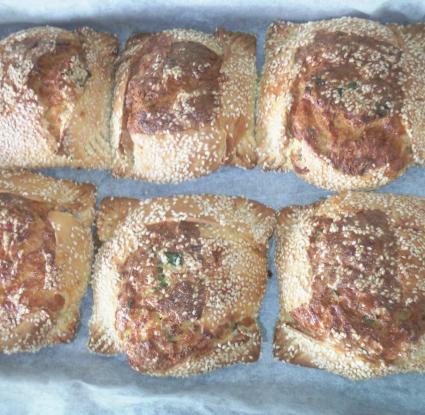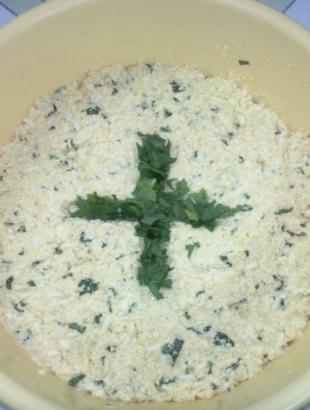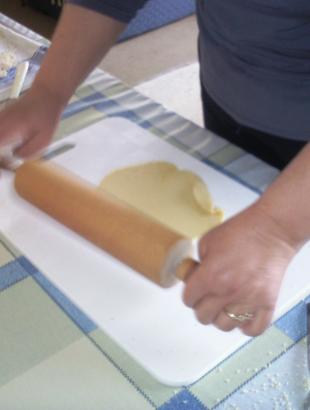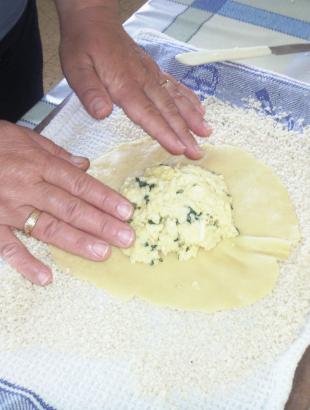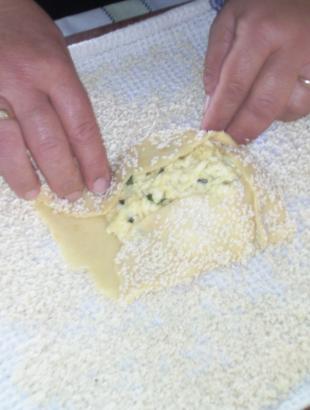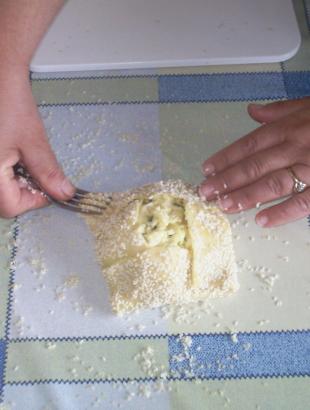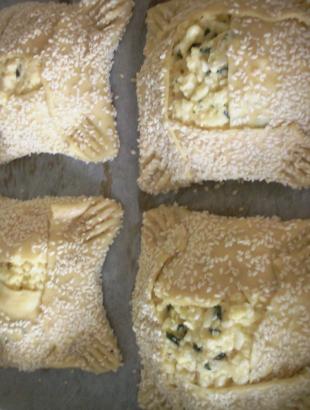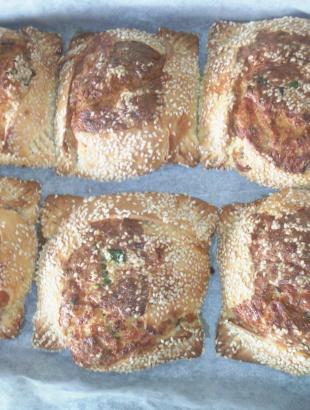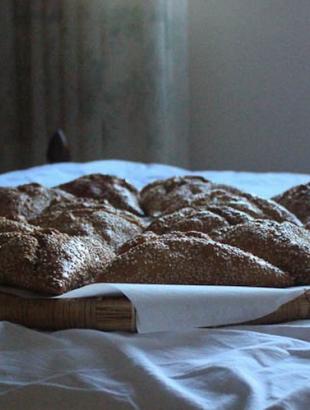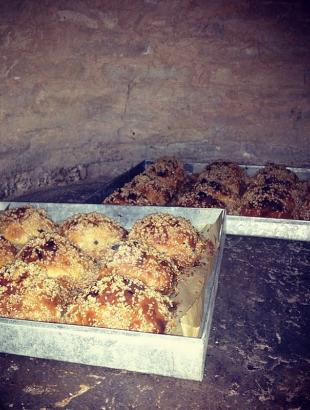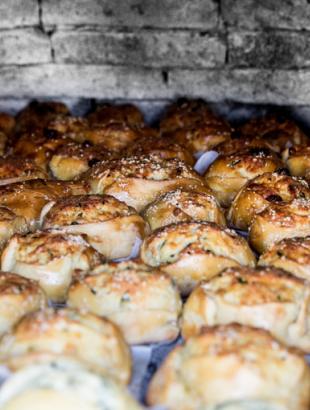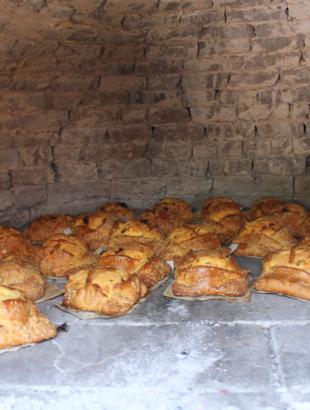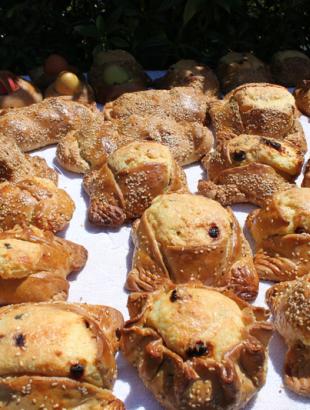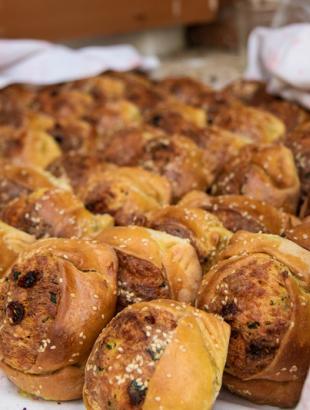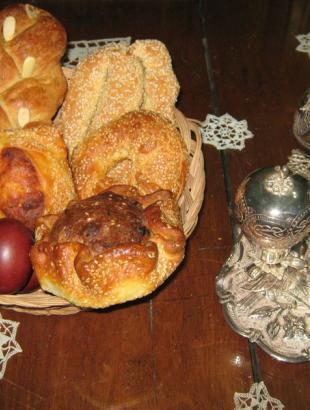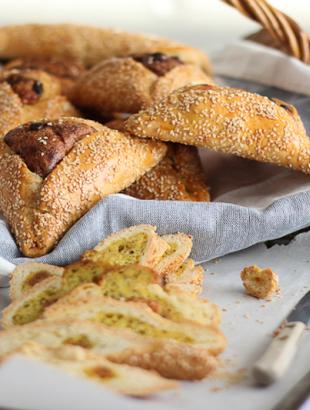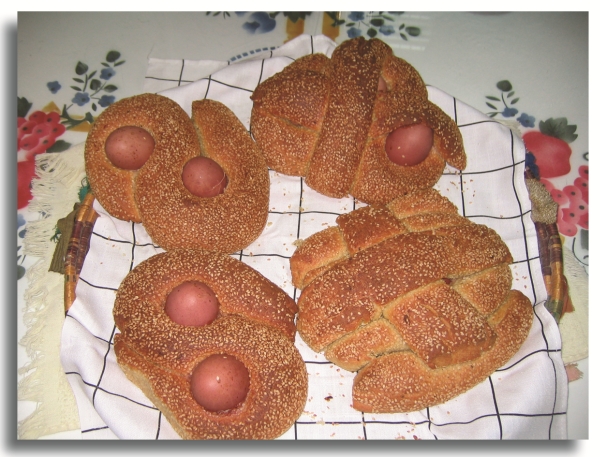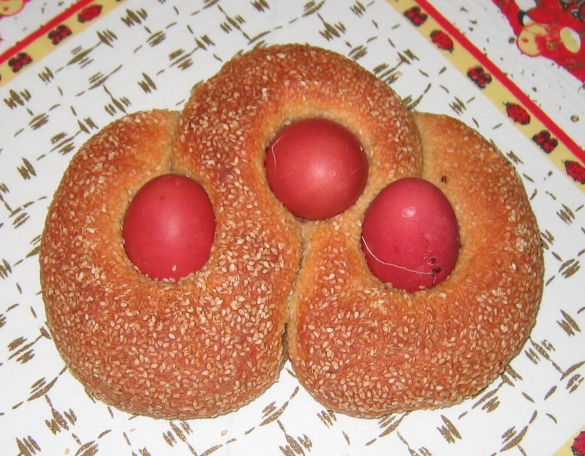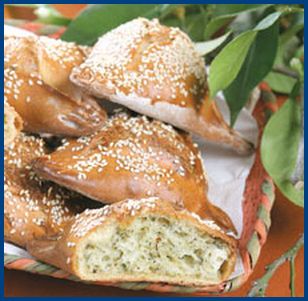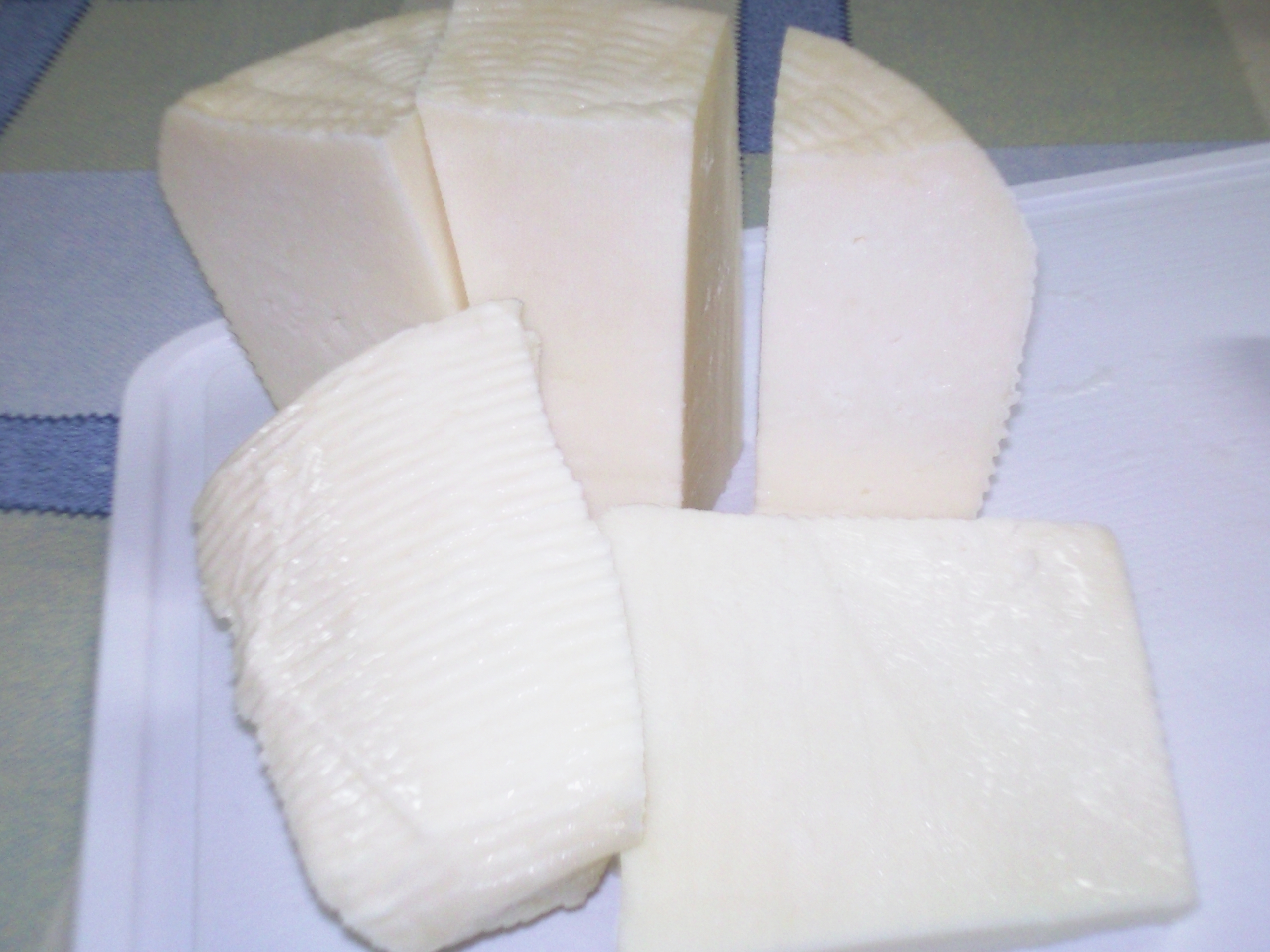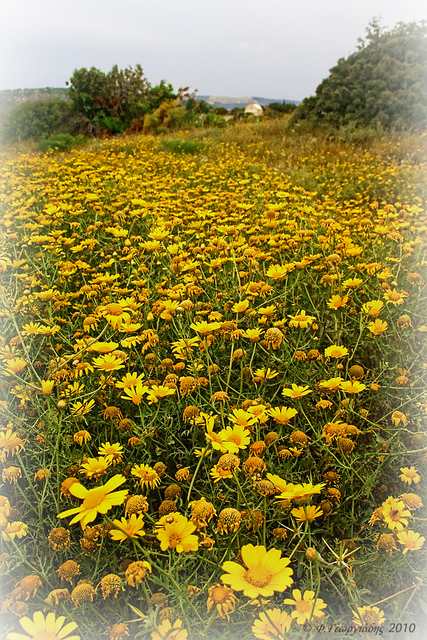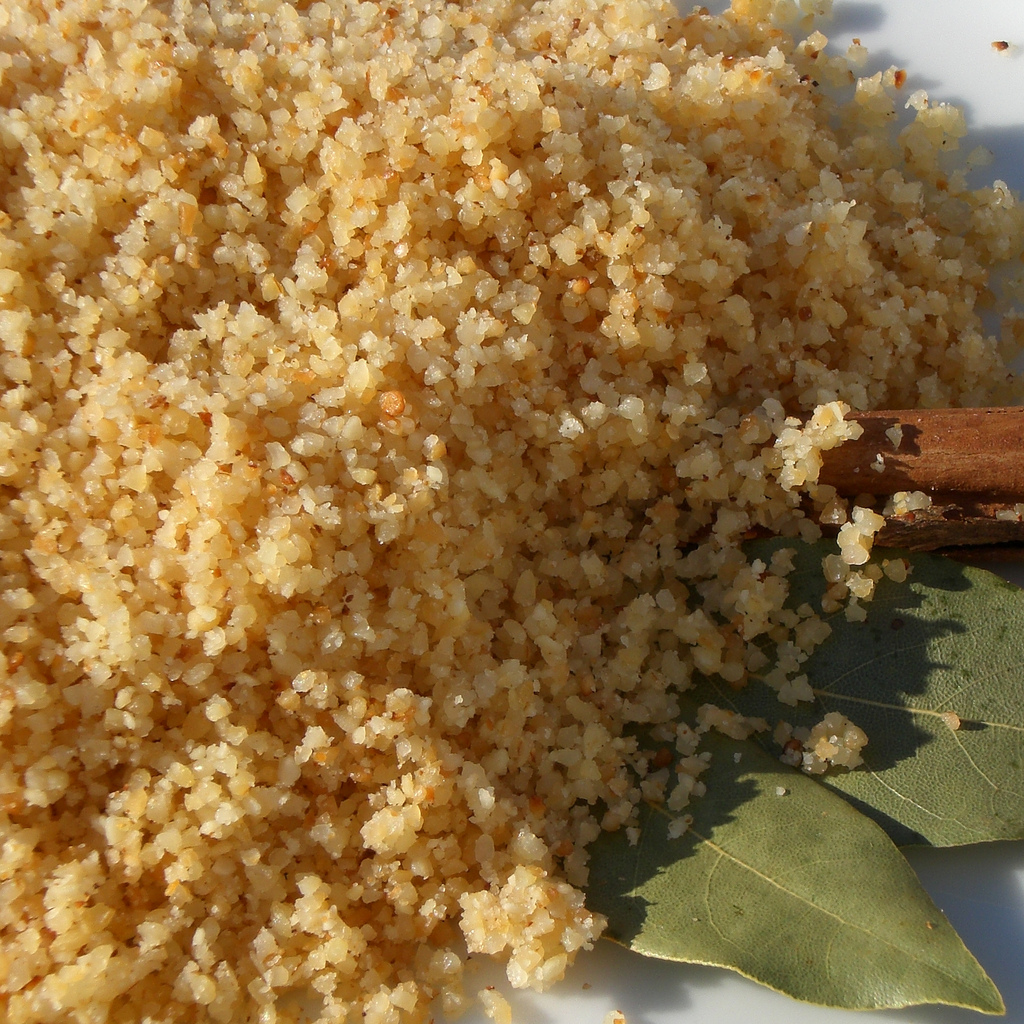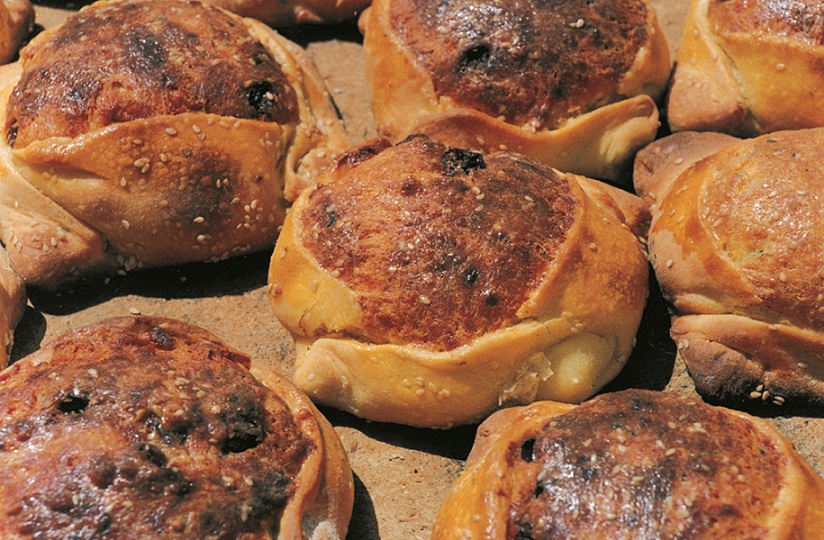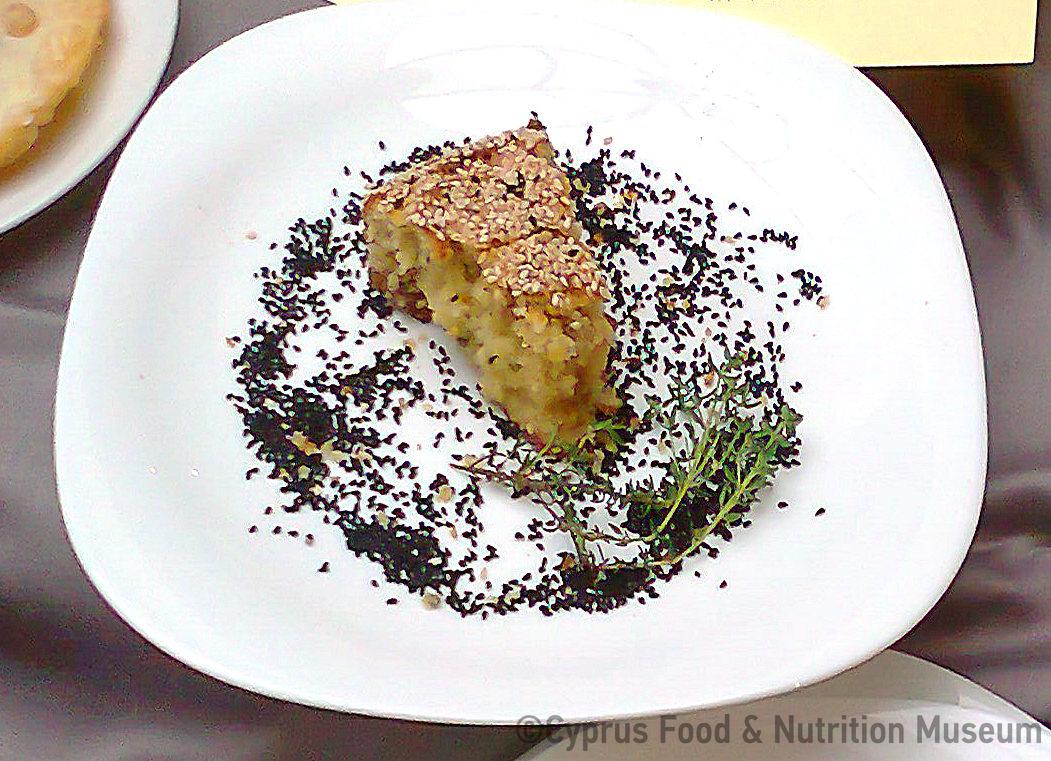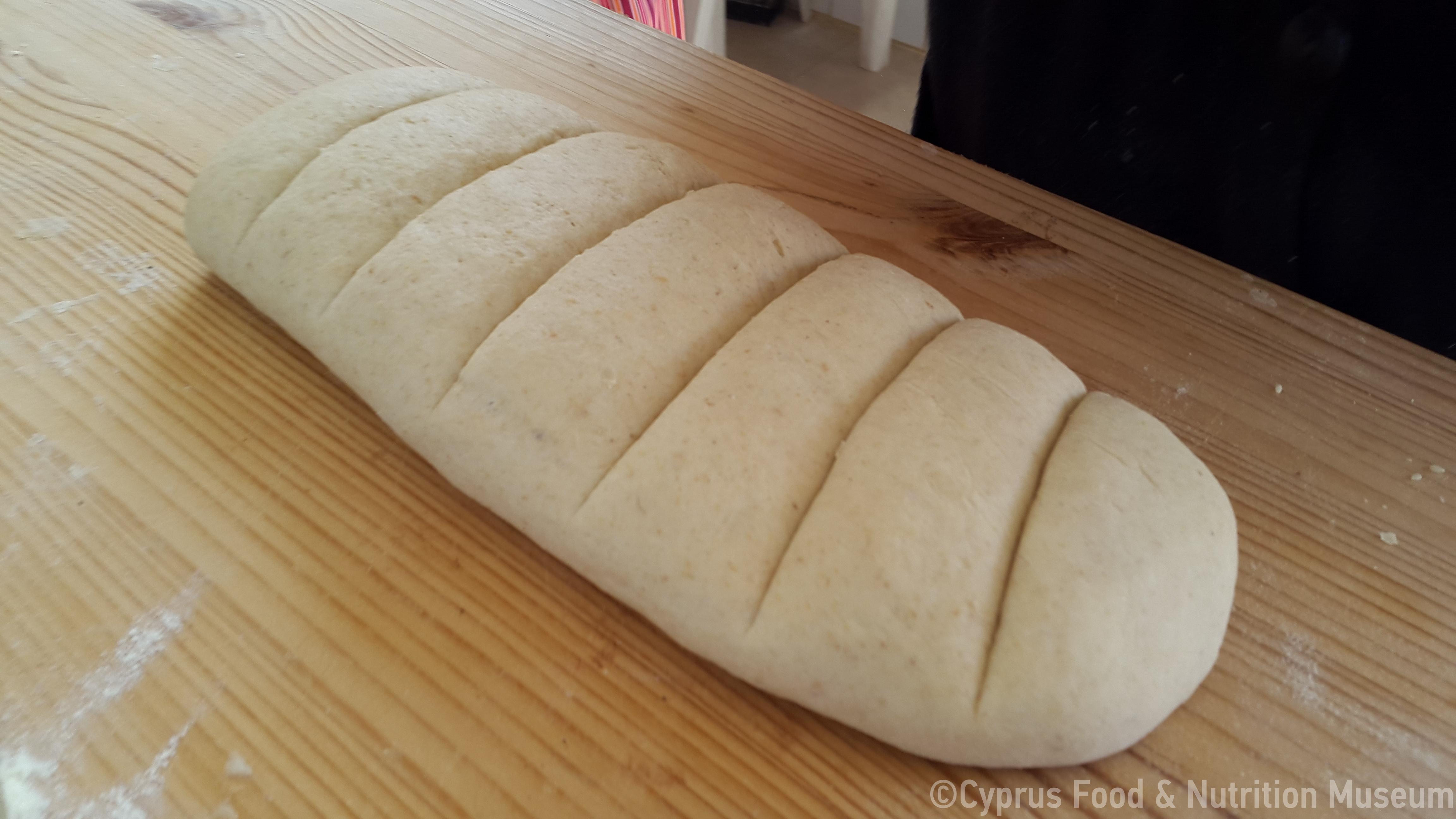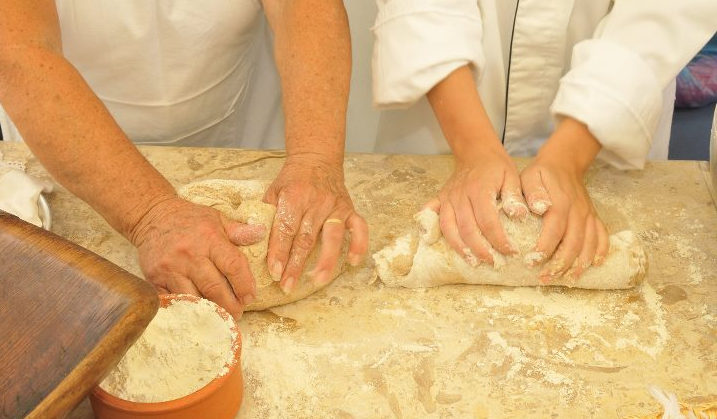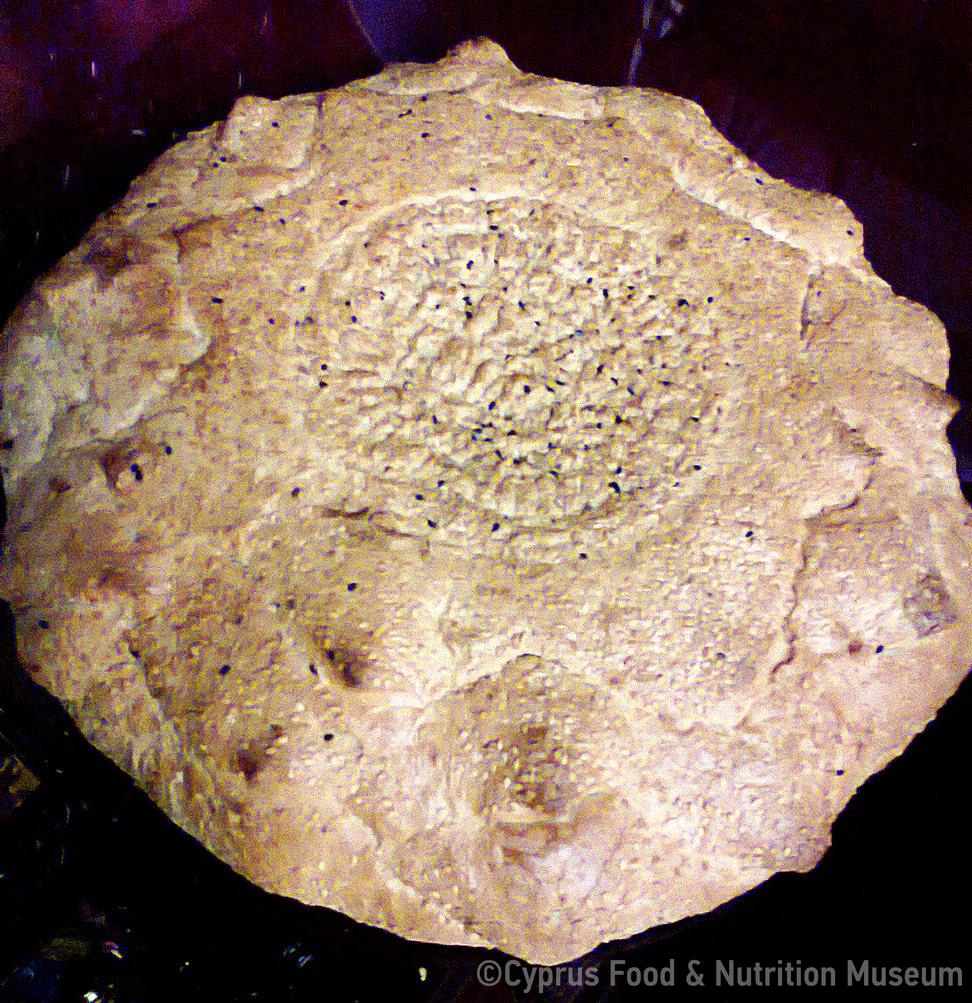Name - Origin
Flaouna is an Easter delicacy; its basic ingredients are flaouna cheese, eggs and raisins (Yangoullis 2009, entry βλαούνα - φλαούνα,η, 101)
ETYM. the word flaouna is derived from 'palathi', an ancient Greek fig pie which the Romans were calling 'fladonis', and later the Anglo-Saxons were calling 'flaon', today's ‘flan', flan– flado > flaon > φλαούνα (Hadjioannou, 1979 pp.56-65).
According to K. C. Yangoullis: medieval French flaon < frank flado < medieval Latin flado (Yangoullis 2009, entry βλαούνα - φλαούνα,η, 101)
Flaounes, the traditional Cypriot Easter delicacy, are made on Holy Saturday. On the previous evening, 'foukos' (the filling) is prepared with grated flaouna cheese, sourdough starter, many eggs, raisins (optional) and various herbs such as mahleb, mastic, spearmint and cinnamon (optional). A sheet of dough is rolled out and cut into squares. A certain quantity of filling is placed on each square and the sides are folded to form a square, triangle or round shaped flaouna. Flaounes are brushed with egg and sesame seeds and baked in the oven (Kypri - Protopapa, 2003 pp.123-139). '
We do not remove the cheese from the talari (weaved cheese case), a process which gives us halloumi. Instead, the cheese is cooked while in the talari and turns into flaouna cheese. It is then grated to make foukos (flaouna filling): for each oka of cheese, 100 drams of milk and about eight eggs are needed, together with sourdough starter which is melted in the milk. Foukos is left to proof and then sesame seeds, cinnamon, spearmint and raisins are added. A dough sheet is rolled and cut into squares, foukos is added on each square and the sides are folded. The top of each flaouna is brushed with egg and sesame seeds and flaounes are baked in the oven' (Mavrokordatos 2003, 307).
Functional and symbolic role
In villages where livestock farming was flourishing, such as Marathovounos and Mousoulita villages, tsippa (milk butter) was available and was used to brush each flaouna with it. Flaounes were offered to guests or to the poor and the elderly who had no ability of preparing them (Kypri - Protopapa 2003, 134).
It is possible that flaounes were used to reintroduce animal products into the Cypriot diet after Lent, without causing digestion problems.
Flaouna is an Easter delicacy, which is consumed after the Resurrection mass. On the evening of Holy Saturday, the Cypriots used to carry flaounes (pl of flaouna) to the church and consume them after the Great Resurrection mass (Kypri - Protopapa 2003, 136-137).
Additional information and bibliography
In the villages of Paphos, paskies are prepared - a variation of flaouna containing pieces of fried meat with spices.
Yangoullis K. G. (2009), Θησαυρός Κυπριακής Διαλέκτου. Ερμηνευτικό, Ετυμολογικό, Φρασεολογικό και Ονοματολογικό Λεξικό της Μεσαιωνικής και Νεότερης Κυπριακής Διαλέκτου, Βιβλιοθήκη Κυπρίων Λαϊκών Ποιητών, Theopress Publications, Nicosia.
Kypri Th. D. (ed.) (1979 [2002²]), Υλικά διά την σύνταξιν ιστορικού λεξικού της κυπριακής διαλέκτου, Μέρος Α΄, Γλωσσάριον Γεωργίου Λουκά, Publications of the Centre for Scientific Research, XLI, Nicosia.
Kypri Th. D. (ed.) (1989), Υλικά διά την σύνταξιν ιστορικού λεξικού της κυπριακής διαλέκτου, Μέρος Γ΄, Γλωσσάριον Ιωάννου Ερωτοκρίτου, Publications of the Centre for Scientific Research, XIV, Nicosia.
Pharmakidis X. (2000), Άπαντα, Epiphaniou Publications, Nicosia.
Kypri Th. - Protopapa K. A. (2003), Παραδοσιακά ζυμώματα της Κύπρου. Publications of the Centre for Scientific Research, XVIII, Nicosia.
Mavrokordatos G. I. (2003), Δίκωμο: Το χθες και το σήμερα, Nicosia.
Eleni Christou, Demetra Demetriou, Stalo Lazarou, Savvas Polyviou, Argyro Xenophontos.

